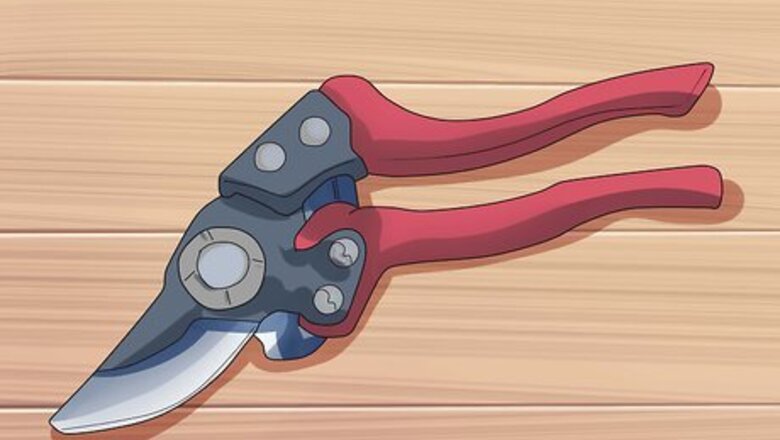
views
X
Research source
Roses grow well in USDA Hardiness Zones 2 to 11, depending on the species, and some species and cultivars are able to survive winter lows of −50 °F (−46 °C).[2]
X
Research source
[3]
X
Research source
Roses grown in the warmer climates of Zones 9 to 11 should be pruned in January or February.[4]
X
Research source
Gathering Your Pruning Equipment
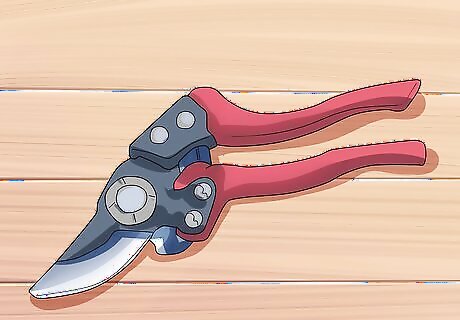
Use sharp scissor-type bypass pruners. Bypass pruners have sharp, curved, scissors-type blades that overlap each other, while other types like anvil pruners have straight upper blades that cut against flat, lower plates. Although anvil pruners are usually cheaper than bypass ones, they will crush the stems of the roses. So avoid using anvil-type pruners and dull pruners to prune roses.
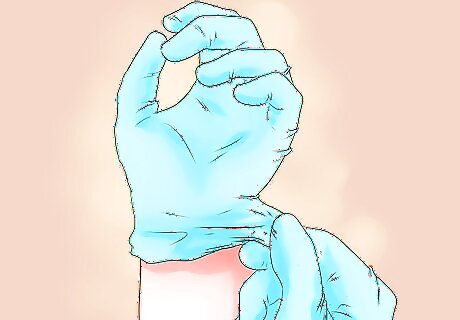
Wear gardening gloves that have long cuffs to cover your wrists. They should also have thick rubber or canvas along the palms and undersides of the fingers for protection against rose thorns.
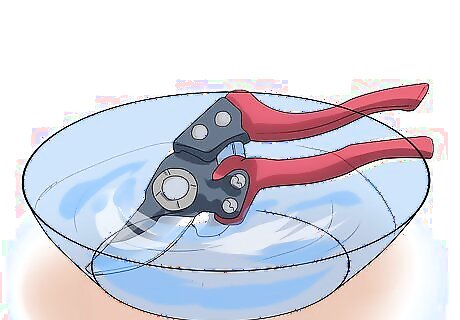
Use a household disinfectant like Lysol to disinfect the pruners before and after using them. Clean any dirt off first and then soak them in disinfectant for 5 minutes. Wipe the disinfectant off the pruners with a clean rag before using them as it will damage the rose stems. If the roses have a disease that has been causing spots on the leaves, stems or flowers or distorted growth, disinfect the pruners between pruning cuts so that healthy stems do not get infected.
Removing Dead and Diseased Wood
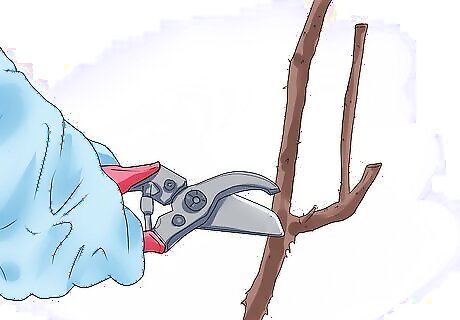
Prune out dead and diseased branches throughout the summer. If you are removing a smaller branch, take the entire branch off all the way back to the main stem. If a main stem or cane is diseased, cut off only the diseased part.
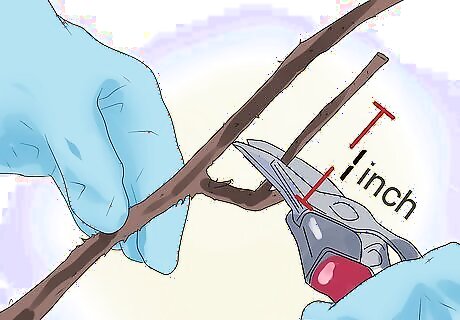
Make the cut about 1 inch below the diseased section where the cane is healthy. Seal the wound on the stem with white glue like Elmer’s glue if it is thicker than a pencil to keep boring beetles out of the stems. Cut above an outward-facing node on the stem if you want to promote better airflow through your plant.
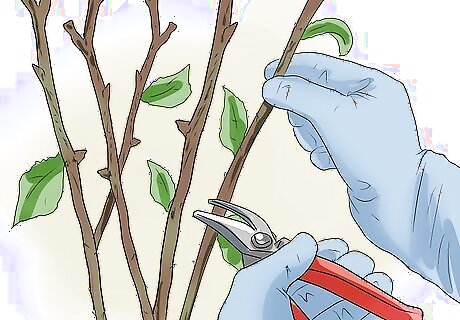
Remove branches growing at odd angles across other branches at the center of the rose bush. They will rub against each other when the wind blows, causing open wounds and an opportunity for disease. Cut off the weaker of the two branches and seal the wound.
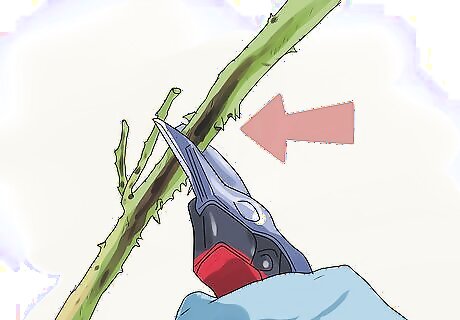
Prune suckers off as soon as they appear. Suckers are stems that grow from below where the rose with desirable characteristics was grafted or attached to the rootstock. Most roses, except mini roses, are grafted. Sucker stems that grow from the rootstock will bloom in a different color, if they bloom at all.
Deadheading and Cleaning up
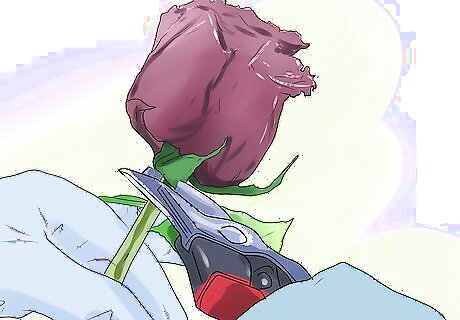
Deadhead roses throughout the summer. Deadheading is the practice of removing the flowers as they fade. This procedure allows the rose to devote its energy toward new, healthy growth rather than producing seeds. Stop deadheading in the fall so the rose can prepare for winter. When deadheading the rose, the entire flower must be removed.

Locate the first leaf with five leaflets on the stem below the flower. This is where a growth bud that will produce strong, healthy stem growth is located. If the flower is deadheaded higher up the stem, the new growth will be weak and unable to support the weight of a new flower, if it is even able to produce a new flower.
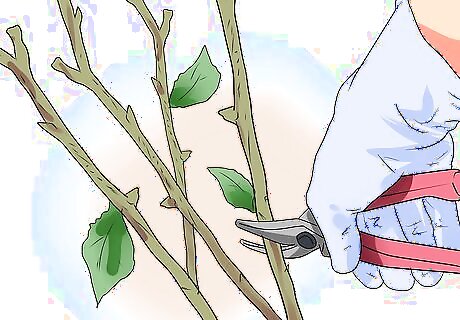
Use sharp pruners to snip the stem ¼ inch above the leaf. There is no need to seal the cut stems as they will not be thick enough for borers to enter. Flower stems can be cut further down at the next leaf with five leaflets for long-stemmed roses to put in a vase.
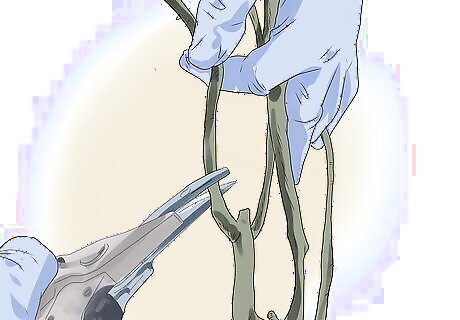
Cut the stems further down to control the direction of the new growth. If the growth bud, a small, raised patch of tissue on the stem, is located on the outside of the stem, the new growth will grow out away from the center of the bush. If it is located on the inside of the stem, new growth will grow toward the inside of the bush.
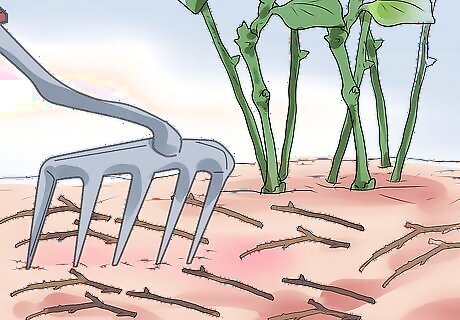
Use a grass rake to remove any trimmings that fall to the ground around the rose bush. Put the trimmings in the garbage. Leaving dead flowers and pruned off bits of stem on the ground around a rose bush will promote disease and harbor insects that may attack the bush.




















Comments
0 comment